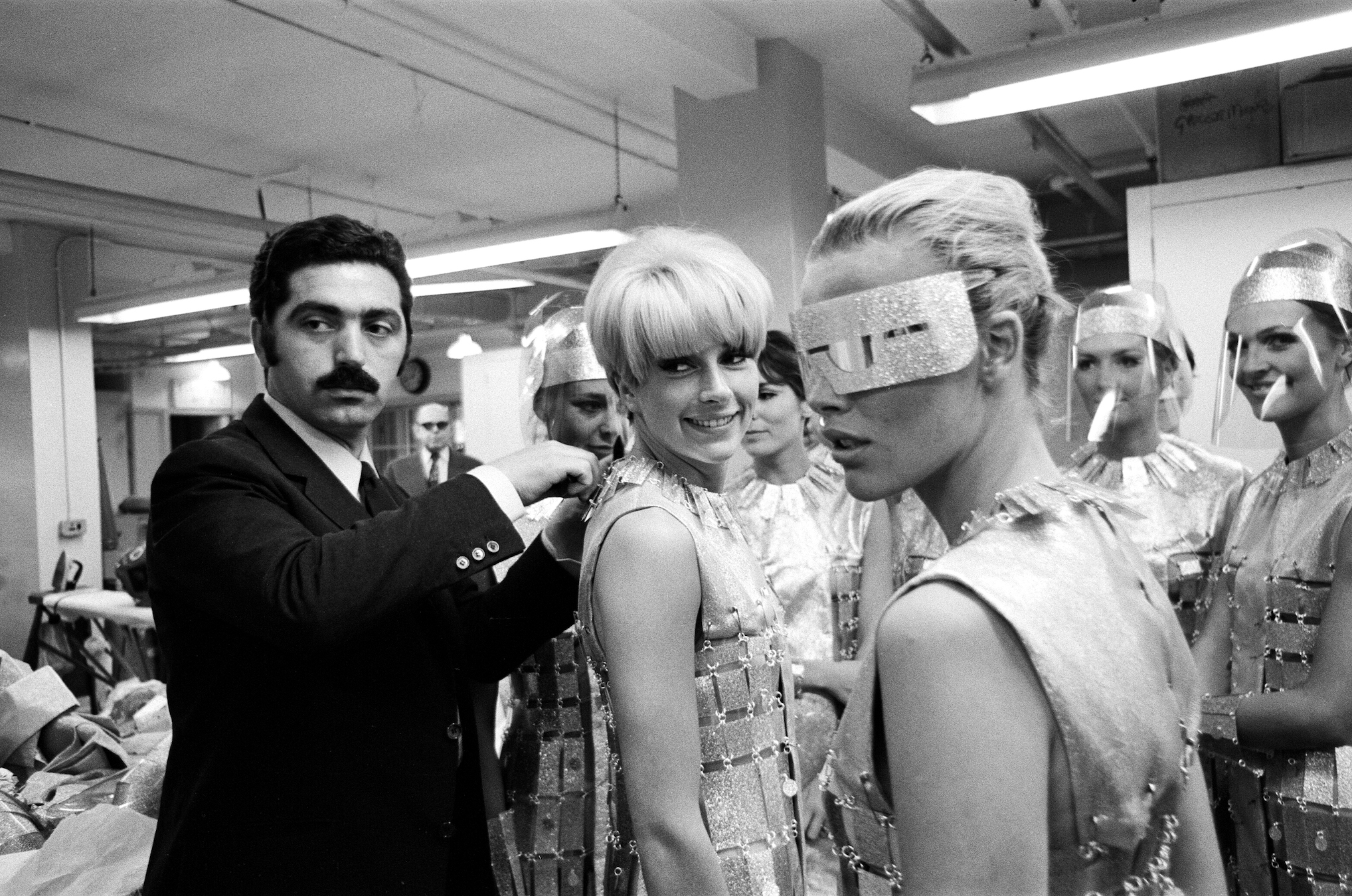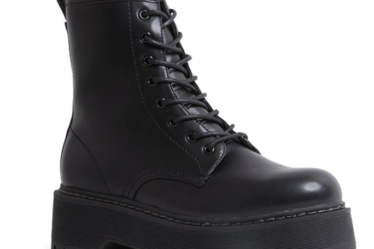
Equal parts superstitious and ingenious, Paco Rabanne remains an enigma to this day. What is clear, however, is the lasting imprint he has left on all of us.
Equal parts superstitious and ingenious, Paco Rabanne remains an enigma to this day. What is clear, however, is the lasting imprint he has left on all of us.
Eternally reflecting in the futuristic sheen of today’s fashion lies Paco Rabanne. The Godfather of space-age style died at 88 years old in Portsall, France, on February 3, 2023.
From the moment Paco Rabanne entered this world, it seemed the stars had aligned for his design legacy. A son of Balenciaga’s chief seamstress and a Republican Colonel—executed during the Spanish Civil War by the fascist regime—Rabanne was a force to be reckoned with from the start.
A feisty spirit steeped with early exposure to haute couture deemed him fashion’s ideal disruptor. Dubbed the ‘Jules Verne of Couture,’ his provocative nature and whimsical heart provoked him to question absolutes.
Why must couture be sewn?
Must fashion really be confined to fabric?
These are a few of the questions he re-evaluated with his transgressive eye and vivid imagination. Prone to shock yet never fettered by public opinion, Rabanne’s work was an emblem of his fervor for the future.
Critiquing material through his craft, he rejected conformity. Rabanne found himself at the moment the arts craved to push past the traditions of its predecessors to bring a new vision forward; he accomplished precisely that.
Doreen Spooner/Mirrorpix via Getty Images
Melding historical references with the Avant-Garde, he solidified the world’s obsession with the space race. Layering his lenses as an architect and as a designer, Rabanne’s work was highly idiosyncratic. As a master manipulator of volume, space, and time, he created entire dimensions in his work through cross-chronological references and gravity-defying silhouettes.
A seer of intergalactic couture, Rabanne rejected conventions with an iron thimble. From his first collection, 12 Unwearable Dresses, the Spanish fashion designer pioneered looks suited to the upper echelons of galaxies many moons away. With garments made of aluminum plates, metal, and a mélange of unforeseen materials, his experimental edge turned Paris’ fashion scene inside out.

AFP via Getty Images
With apparel that more closely emulated armor than gowns, Rabanne’s designs empowered women. Fierce, bold, and, ultimately, unapologetic, they flared with the same confidence and strength as the women wearing them. Talismanic and audacious, Rabanne became a name associated with the woman of the future.
Birthing the metallic space babe into the world, he paved the way for the turn of the century’s aesthetics. An icon of the silver screen, the rebellious visionary’s creations are forever immortalized within the films that once flaunted them. Including Two for the Road, Barbarella, Les Aventuriers, and a surfeit of other defining cinematic classics of the 20th century, his innovations have become a hallmark of pop culture’s fascination with the future.
Unorthodox by design, the Rabanne narrative expanded to new proportions of whimsicality and chic experimentation. No stone was left unturned in his questioning of fashion as a form, practice, and industry.

Luis Davilla/Cover via Getty Images
Heightening his sense of vestiary adventure, debuted Giffo. The legendary garment born from spraying liquid plastic into Rabanne’s meticulously shaped mold would significantly shift his ambitions as a designer.
Ensuing three years of experimentation, Rabanne finally perfected the process in 1968. Replacing hundreds of individual operations, its production process was reduced to the absolute sense of simplicity; all that was now required was spraying the plastic into the mold and removing the finished garment.
Alas, a vision far too ahead of its time, the invention did not fare well with manufacturers and, shortly after, became obsolete. It is only one example of many demonstrating Paco Rabanne’s ingenious outlook fusing the designer and the tinkerer.
When you hear the name Paco Rabanne today, many instantly conjure an image—or perhaps a scent is more appropriate—of the eponymous fragrances that have taken the world by storm. While their addition to the House proved an immensely lucrative venture for the brand, Rabanne remained fixed on staying true to his roots. Dubbing its first fragrance Calandre—French for grille—it became evident that the late visionary’s subversive spirit would ceaselessly persist.
Often relishing in undermining the status quo, the Spanish designer captivated the world with his zany, futuristic flair.

Victor VIRGILE/Gamma-Rapho via Getty Images
Equal parts superstitious and ingenious, he remains an enigma to this day. What is clear, however, is the lasting imprint he has left on all of us. Whether in our affinity for iridescent skirts or neo-futuristic statement jewelry, we all carry a semblance of Rabanne whenever we dress for the future.
Referring to his designs, the late fashion designer once stated, “they are manifestos. By pushing certain experiences to the limit, it is possible to change people’s attitudes.” And that he did. Rabanne’s legacy will always be remembered for his relentless desire to challenge the norm, charging expression into the next millennium.



